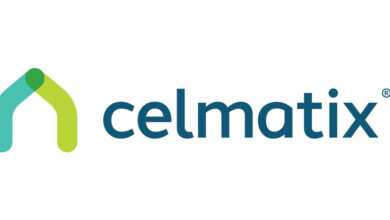Global Celiac Disease Market Insight, Epidemiology and Market Forecast Report 2017-2020 & 2021-2030 – ResearchAndMarkets.com

DUBLIN–(BUSINESS WIRE)–The “Celiac Disease (CD) Market Insight, Epidemiology and Market Forecast – 2030” drug pipelines has been added to ResearchAndMarkets.com’s offering.
This ‘Celiac Disease (CD) – Market Insights, Epidemiology and Market Forecast- 2030’ report delivers an in-depth understanding of the Celiac Disease (CD), historical and forecasted epidemiology as well as the Celiac Disease (CD) market trends in the United States, EU5 (Germany, Spain, Italy, France, and United Kingdom) and Japan.
Key Findings
- The total prevalent population of Celiac Disease in the 7 major markets was 6,450,607 in 2020 which is anticipated to increase at a CAGR of 0.53% during the study period (2018-2030).
- The total 7MM diagnosed prevalent cases of Celiac Disease in 2020 were 1,403,779 out of which the highest diagnosed prevalent cases of this disease were in the United States, which was 701,718 which is anticipated to increase at a CAGR of 2.0% during the study period (2018-2030).
- According to the estimates by the publisher, 252,618 and 449,099 cases of males and females were in the United States, in 2020.
- In the United States, the number of cases of Classical, Non-classical and Sub-clinical were 189,464, 364,893 and 147,361 respectively, in 2020.
- In the United States the maximum number of cases of Celiac Disease were in the age group of 19-39 with 256,127 cases in 2020, while the lowest number of cases were in the age group >80 with 14,034 cases in 2020.
- In the EU5 countries the total prevalent population of Celiac Disease was maximum in Germany with 742,796 cases, followed by the United Kingdom with 660,156 cases in 2020. While, the least number of cases were in Spain, i.e., 430,359 in 2020.
- In Japan, the prevalence of Celiac Disease was 66,130 in 2020.
Key Topics Covered:
1 Key Insights
2 Celiac Disease Market Overview at a Glance
2.1 Market Share (%) Distribution of Celiac Disease in 2018
2.2 Market Share (%) Distribution of Celiac Disease in 2030
3 Executive Summary of Celiac Disease (CD)
4 Disease Background and Overview: Celiac Disease
4.1 Introduction
4.2 Types
4.2.1 Classical CD
4.2.2 Non-Classical CD
4.2.3 Silent CD
4.3 Causes
4.3.1 Genetics Factors
4.3.2 Environmental Factors
4.4 Symptoms
4.5 Pathogenesis
4.6 Pathophysiology
4.6.1 Genetics
4.6.2 Gluten, as an environmental trigger of CD
4.7 Clinical Presentation
4.8 Diagnosis
4.8.1 Diagnostic Tests of CD
4.9 Biomarkers for CD
4.9.1 Genetic Biomarkers in CD
4.9.2 Serological Biomarkers in CD
4.10 Differential diagnosis
5 Algorithm for Diagnosis of CD
6 Diagnostic Guidelines by the European Society for the Study of Coeliac Disease (ESsCD)
6.1 Recommendations on who should be tested for CD
6.2 Recommendations for Serology
6.3 Recommendations for Endoscopy and Histopathology
6.4 Recommendations for HLA-DQ2/8 Typing
6.5 Recommendations for other Diagnostic Tests
6.6 Recommendations for Diagnostic Confirmation
7 Diagnostic Guidelines by the World Gastroenterology Organization (WGO)
7.1 Recommendation for Diagnosis
7.2 Recommendations for Testing Patients
7.2.1 Patients with clinical manifestations suggestive of CD
7.2.2 Conditions associated with an increased risk for CD
7.2.3 First-degree relatives of patients with CD
7.3 Recommendations for Diagnostic Tests
7.3.1 Endoscopy in patients with suspected CD
7.3.2 Intestinal biopsy and histology
7.3.3 Serum antibody tests
8 Epidemiology and Patient Population: Key Findings
8.1 7MM Total Prevalent Population of Celiac Disease
8.2 MM Total Diagnosed Prevalent Population of Celiac Disease
9 Country Wise-Epidemiology of Celiac Disease
9.1 United States
9.2 EU5 Countries
9.3 Germany
9.4 France
9.5 Italy
9.6 Spain
9.7 United Kingdom
9.8 Japan
10 Treatment
10.1 Gluten-free Diet (GFD)
10.1.1 Gluten-free (GF) foods on prescription
10.1.2 Oats
10.2 Other treatments
10.2.1 Vaccinations
10.2.2 Supplements
10.2.3 Pharmacologic Treatments
10.2.4 Gluten-degrading enzymes
10.2.5 Blocking gluten entry across the intestinal epithelium
10.2.6 Rho/Rho-kinase inhibition
10.2.7 Immunotherapy
10.2.8 Dermatitis Herpetiformis
10.3 Refractory Celiac Disease (RCD)
11 Treatment Algorithm for CD
12 Treatment Algorithm for CD by BMJ Best Practice
12.1 Gluten-free diet (1st Line Treatment)
12.1.1 Calcium and Vitamin D supplementation with or without Iron
12.2 Refractory Celiac Disease (RCD)
12.3 Celiac Crisis
12.3.1 Rehydration and correction of electrolyte abnormalities
12.3.2 Corticosteroid adjunct treatment
13 European Society for the Study of Coeliac Disease (ESsCD) guideline for coeliac disease and other gluten-related disorders
13.1 Dietary Management
13.2 Follow Up
13.3 Slow-responders and RCD
13.3.1 Recommendations for treating RCD-I
13.3.2 Recommendations for treating RCD-II
13.4 Special Issues about Children and Adolescents
14 World Gastroenterology Organisation Global Guidelines for CD
15 Recognized Establishments
16 Unmet Needs
17 Emerging Drugs
17.1 Key Cross Competition
17.2 Larazotide Acetate (INN-202/AT-1001): 9 Meters Biopharma
17.3 Latiglutenase (IMGX003/ALV003): ImmunogenX
17.4 PRV-015: Provention Bio
17.5 TAK-101: Takeda/Cour Pharmaceuticals
17.6 AG017: Precigen ActoBio
17.7 ZED1227: Falk Pharma and Zedira
18 Celiac Disease: 7 Major Market Analysis
19 The United States Market Outlook
20 EU-5 Countries: Market Outlook
21 Japan Market Outlook
22 KOL Reviews
23 Case Reports
23.1 Association of gluten intake during the first 5 years of life with the incidence of celiac disease autoimmunity and celiac disease among children at increased risk (US)
23.2 The prevalence of the celiac disease in Europe: Results of a centralized, international mass screening project (Italy)
23.3 A case of celiac disease with type I enteropathy-associated T-cell lymphoma in a Japanese male patient (Japan)
24 Market Drivers
25 Market Barriers
26 SWOT Analysis
27 Appendix
For more information about this drug pipelines report visit https://www.researchandmarkets.com/r/dquaq
Contacts
ResearchAndMarkets.com
Laura Wood, Senior Press Manager
[email protected]
For E.S.T Office Hours Call 1-917-300-0470
For U.S./CAN Toll Free Call 1-800-526-8630
For GMT Office Hours Call +353-1-416-8900



